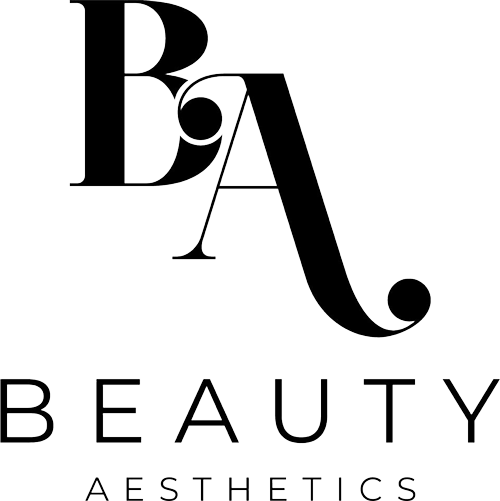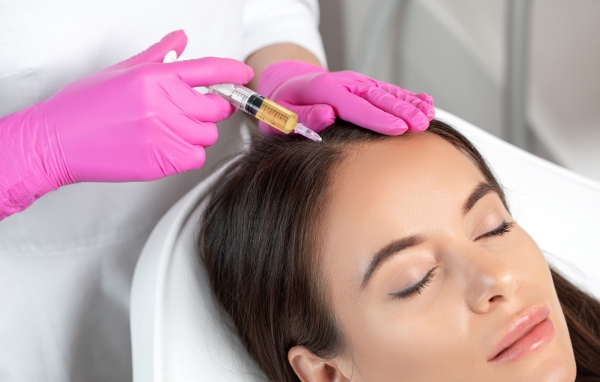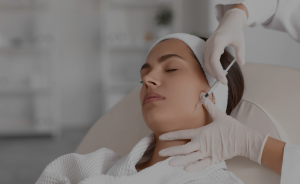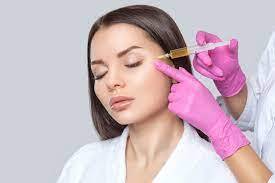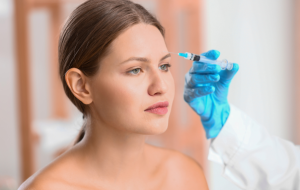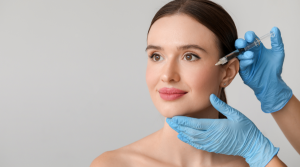Platelet-rich plasma (PRP) treatment has gained significant attention recently as a revolutionary solution for various aesthetic and medical concerns. By leveraging the body’s natural healing processes, PRP therapy offers a range of benefits for the face, hair, and other applications. However, like any medical procedure, PRP treatment also comes with potential side effects. In this comprehensive blog, we will explore PRP treatment’s benefits and side effects, particularly focusing on its applications for facial rejuvenation, hair restoration, and other uses. Also, we will talk about the cost of PRP hair treatment and considerations for platelet-rich plasma therapy. Additionally, ‘prp facial before and after’ images are crucial in illustrating the results of PRP facials, providing potential clients with a clear understanding of the transformations achievable through these treatments.
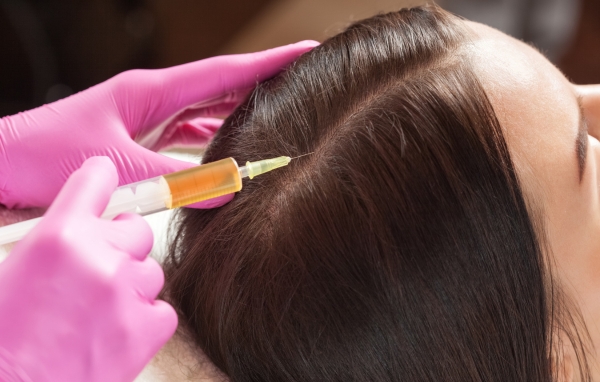
What is Platelet-Rich Plasma Treatment?
Platelet-rich plasma (PRP) treatment is a non-surgical, minimally invasive procedure that harnesses the body’s natural healing properties to rejuvenate the skin, stimulate collagen production, and promote tissue repair. This innovative therapy involves using the patient’s own blood, which is rich in growth factors and platelets, to enhance skin health and appearance. By concentrating these beneficial components, PRP treatment can effectively address various cosmetic and medical concerns, making it a versatile option for those seeking natural and effective solutions.
Understanding PRP Treatment: How It Works
Platelet-rich plasma (PRP) treatment involves drawing a small amount of the patient’s own blood, processing it to isolate the platelet-rich plasma, and then injecting this concentrated solution into the target area. PRP contains growth factors that play a crucial role in wound healing, collagen production, and regeneration of skin cells and hair follicles. Using platelet-rich plasma PRP stimulates the body’s natural healing mechanisms, leading to various cosmetic and medical benefits.
PRP therapy is versatile and used in several areas, including PRP facial rejuvenation, hair growth stimulation, and treating acne and surgical scars. The high concentration of growth factors in PRP makes it an effective solution for uneven skin tone, sagging skin, thinning hair, and more.
The PRP Treatment Process
The PRP treatment process is straightforward and typically involves the following steps:
Blood Extraction
A small sample of blood, usually around 10-20 mL, is drawn from the patient’s arm.
Centrifugation
The blood sample is then placed in a centrifuge, which spins at high speed to separate the platelet-rich plasma from other blood components.
Preparation
The isolated PRP is prepared for injection by adding a small amount of calcium chloride to activate the platelets, enhancing their healing properties.
Injection
Using a fine needle, the PRP is injected into the targeted treatment area. This part of the process typically takes about 10-30 minutes, depending on the size of the area being treated.
Microneedling (Optional)
In some cases, microneedling may be performed in conjunction with PRP injections to enhance the penetration of PRP into the skin, further boosting its rejuvenating effects.
This process leverages the body’s own resources to promote healing and regeneration, making it a natural and effective treatment option.
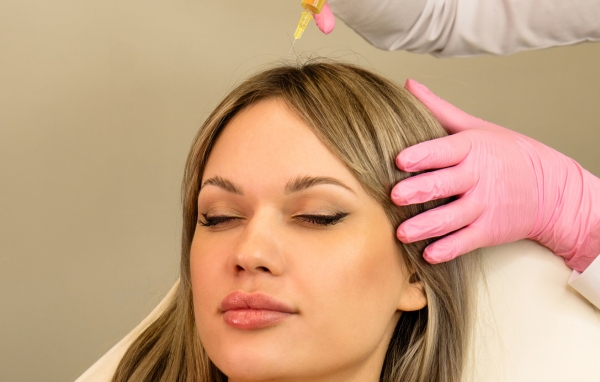
PRP Treatment for the Face: Acne Scars, Rejuvenation and More
One of the most popular applications of PRP therapy is for facial rejuvenation, commonly referred to as the vampire facial.
This treatment has garnered attention for its ability to improve skin texture, reduce the appearance of acne scars, and promote a more youthful complexion. Before-and-after images of PRP facials are crucial in demonstrating the effectiveness of the treatment.
Benefits and PRP Facial Before and After Results
- Stimulates Collagen Production
PRP facial treatments are highly effective in stimulating collagen production. The growth factors in PRP encourage the skin to produce new collagen, which helps to reduce fine lines and wrinkles and gives the skin a smoother, more youthful appearance. - Improves Skin Texture and Tone
PRP therapy can significantly enhance skin texture by promoting the regeneration of new skin cells. This is particularly beneficial for individuals with uneven skin tone or those seeking to improve the overall radiance of their complexion. Darker skin tones can also benefit from PRP therapy, as it does not involve harsh chemicals that may cause hyperpigmentation. - Reduces Acne Scars and Surgical Scars
For those struggling with acne scars or surgical scars, PRP therapy offers a natural and effective treatment option—the growth factors in PRP help to accelerate the healing of scars and reduce their visibility over time. - Minimizes Sagging Skin
By boosting collagen and elastin production, PRP facials can help to tighten and lift sagging skin, resulting in a firmer and more toned appearance. - Enhances Overall Skin Health
PRP therapy promotes healthy skin by improving blood circulation and encouraging the production of white and red blood cells. This process supports overall skin vitality and resilience.
Side Effects of PRP Facial Treatments
While PRP therapy is generally considered safe, it is essential to be aware of the potential side effects:
- Temporary Redness and Swelling
After a PRP facial treatment, temporary redness and swelling at the injection site are common. These side effects usually subside within a few days. - Mild Discomfort and Pain
Patients may experience mild discomfort or pain during the treatment session as the PRP is injected into the skin. A numbing cream can help minimize this discomfort. - Bruising
Bruising at the injection sites is a possible side effect, particularly in individuals with sensitive skin. This bruising typically resolves within a week. - Infection
Although rare, there is a risk of infection if the procedure is not performed in a sterile environment. Ensuring that a qualified medical professional conducts the procedure can mitigate this risk. - Allergic Reactions
Since PRP therapy uses the patient’s own blood, the risk of an allergic reaction is minimal. However, patients should inform their healthcare provider of known allergies before the procedure.
PRP Treatment for Hair: Restoring Growth and Volume
PRP hair treatment has become popular for individuals experiencing hair loss and thinning hair. This treatment leverages the power of platelet-rich plasma to stimulate hair follicles and promote natural hair growth.
Benefits of PRP Hair Treatments
- Stimulates Hair Growth
PRP injections into the scalp deliver growth factors directly to the hair follicles, encouraging them to enter the anagen phase (active growth phase) of the hair cycle. This can lead to increased hair growth and thickening of existing hair strands. - Effective for Male Pattern Baldness
Male pattern baldness, a common cause of hair loss in men, can be effectively treated with PRP therapy. The treatment helps strengthen weakened hair follicles and promote hair regrowth in areas affected by balding. - Reduces Hair Thinning
PRP hair treatments can slow down the process of thinning hair by improving the health of hair follicles and increasing blood flow to the scalp. This results in more robust hair growth and a fuller head of hair. - Natural and Non-Surgical
Unlike hair transplant surgeries, PRP therapy is a noninvasive procedure that uses the patient’s blood to stimulate hair regrowth. This makes it a natural alternative with fewer risks and side effects. - Improves Scalp Health
The growth factors in PRP help to enhance scalp health by promoting blood circulation and supporting the regeneration of skin cells in the scalp. This creates a healthy environment for hair growth.
Side Effects of PRP Hair Treatments
While PRP therapy for hair restoration is generally safe, some side effects may occur:
- Mild Pain and Discomfort
Patients may experience mild pain or discomfort during and after the PRP injections. This discomfort is usually short-lived and can be managed with over-the-counter pain relievers. - Temporary Redness and Swelling
Similar to PRP facials, temporary redness and swelling at the injection sites are common after a PRP hair treatment. These side effects typically subside within a few days. - Bruising and Tenderness
Bruising and tenderness in the scalp may occur, particularly in areas where multiple injections are administered. These symptoms usually resolve within a week. - Infection
If the PRP treatment is not performed in a sterile environment, there is a small risk of infection. To reduce this risk, it is essential to choose a qualified healthcare provider. - Headaches
Some patients report headaches after PRP hair treatments, which are typically mild and temporary. Rest and hydration can help alleviate this side effect.
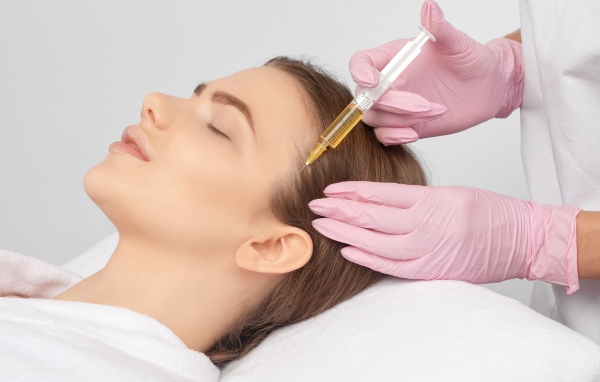
PRP Treatment for Other Applications: Beyond Hair and Face
In addition to its applications for facial rejuvenation and hair restoration, PRP therapy is used in various other medical and cosmetic procedures.
PRP for Joint Injuries and Pain Management
PRP therapy is widely used in sports medicine to treat joint injuries, tendonitis, and other musculoskeletal issues. The growth factors in PRP help to accelerate the healing of injured tissues, reduce inflammation, and alleviate pain.
- Reduces Inflammation: PRP therapy can significantly reduce inflammation in injured joints, relieving pain and discomfort.
- Speeds Up Healing: The growth factors in PRP support the regeneration of damaged tissues, leading to faster injury recovery times.
Growth Factors for Surgical Scars and Wound Healing
PRP therapy also effectively improves the appearance of surgical scars and wound-healing. The growth factors in PRP promote tissue regeneration and collagen production, which helps minimize scarring and accelerate wound healing.
Minimizes Scarring
PRP therapy can reduce the visibility of scars by promoting the regeneration of healthy skin cells.
Accelerates Healing
The high concentration of growth factors in PRP helps wounds heal faster, reducing the risk of complications.
PRP for Facial Rejuvenation: Vampire Facial
Vampire facial, or PRP facials, are a popular cosmetic procedure that uses platelet-rich plasma to rejuvenate the skin. This treatment is known for improving skin’s surface texture, reducing signs of aging, and creating a more youthful appearance. Before-and-after images of PRP facials are crucial in showcasing the dramatic transformations achievable through this treatment.
Improves Skin Texture
PRP facial rejuvenation enhances the skin’s texture by promoting the production of new collagen and elastin.
Reduces Signs of Aging
Vampire facials help to diminish the appearance of fine lines, wrinkles, and sagging skin, resulting in younger-looking skin.
Aftercare and Recovery
Following a PRP treatment, patients may experience mild side effects such as redness, swelling, and bruising at the injection site. These effects are typically temporary and resolve within a few days. To ensure optimal results and minimize downtime, patients are advised to:
- Avoid strenuous activities for 24-48 hours post-treatment.
- Steer clear of direct sun exposure for 24-48 hours after the procedure.
- Use gentle skincare products and avoid harsh exfoliants for 1-2 weeks following the treatment.
- Adhere to a post-treatment skincare routine as recommended by the practitioner.
By following these guidelines, patients can enhance the effectiveness of their PRP treatment and enjoy smoother, healthier skin.
Cost of PRP Hair Treatment: What to Expect
The cost of PRP hair treatment can vary depending on several factors, including the location of the clinic, the expertise of the provider, and the number of treatment sessions required. On average, a single PRP hair treatment session ranges from $500 to $2,000.
Most patients require multiple sessions to achieve optimal results, with maintenance treatments recommended every few months. It is important to consult with a qualified provider to get a personalized estimate based on your specific needs.
While PRP hair treatments are generally not covered by medical insurance, many patients consider them a worthwhile investment due to their effectiveness in promoting natural hair growth and reducing hair loss.
Is PRP Treatment Safe?
PRP therapy is considered safe when performed by a qualified medical professional in a sterile environment. Since the treatment uses the patient’s own blood, the risk of complications such as allergic reactions or rejection is minimal. However, as with any medical procedure, patients should be aware of potential risks and side effects.
To ensure the safety and effectiveness of PRP treatments, choosing a reputable provider with experience in administering PRP therapy is crucial. Proper aftercare, including avoiding sun exposure and following the provider’s instructions, can also help minimize the risk of side effects.
Conclusion: The Versatility of PRP Treatment
PRP treatment is a versatile and effective solution for various cosmetic and medical concerns. From facial rejuvenation and hair restoration to treating joint injuries and scars, PRP therapy offers numerous benefits with minimal risks. Whether you want to improve your skin texture, stimulate hair growth, or accelerate the healing of an injury, PRP therapy may be the right choice.
Beauty Aesthetics in Toronto offers expert PRP therapy services tailored to your needs. Our team of professionals is dedicated to providing safe and effective treatments that help you achieve your desired results. If you’re considering PRP treatment, we invite you to schedule a consultation to discuss your goals and explore how PRP therapy can benefit you.
Frequently Asked Questions (FAQs)
1. How long does it take to see results from PRP treatment?
Results from PRP treatments can vary depending on the area being treated. For hair restoration, patients may start to see improvements in hair growth within a few weeks to a few months. For facial rejuvenation, the skin may appear more radiant and youthful after the first treatment, with optimal results visible after several sessions.
2. How many PRP treatment sessions are needed?
The number of sessions required depends on the specific condition being treated and the individual’s response to therapy. Multiple sessions are typically needed for hair restoration, with maintenance treatments recommended every few months. Three to four sessions spaced a few weeks apart are usually sufficient for facial rejuvenation.
3. Are there any restrictions after PRP treatment?
After PRP treatment, patients are advised to avoid strenuous activities, heavy lifting, and direct sun exposure for at least 24-48 hours. It is also important to follow any specific aftercare instructions the healthcare provider provides to ensure optimal healing and results.
4. Can PRP treatment be combined with other procedures?
PRP therapy can be combined with other cosmetic procedures, such as microneedling, laser therapy, or hair transplant surgery, to enhance results. Combining treatments can provide more comprehensive outcomes and address multiple concerns simultaneously.
5. Is PRP treatment suitable for all skin types?
PRP treatment is suitable for most skin types, including darker skin tones. However, it is essential to consult a qualified provider who can assess your skin and recommend the best approach for your needs.
6. Who is a good candidate for PRP treatment?
PRP treatment suits many individuals, especially those experiencing early-stage hair loss, thinning hair, or skin concerns like acne scars and sagging skin. However, it may be less effective for individuals with severe hair loss or those with certain medical conditions. It’s essential to consult with a medical professional to determine if you’re a good candidate for PRP therapy.
7. How should I prepare for a PRP treatment session?
Before your PRP treatment, it’s recommended to avoid blood thinners, such as aspirin or ibuprofen, for at least a week unless prescribed by your doctor. Additionally, staying hydrated and eating a healthy meal before your treatment can help ensure a smoother procedure. Your healthcare provider will give you specific instructions based on your individual needs.
8. Are there any activities I should avoid after PRP treatment?
After PRP treatment, it is advised to avoid strenuous activities, heavy lifting, or intense exercise for at least 24-48 hours. Also, please avoid direct sun exposure on the treated area and use harsh skincare products or treatments for a few days. Your provider will give you detailed post-treatment care instructions.
